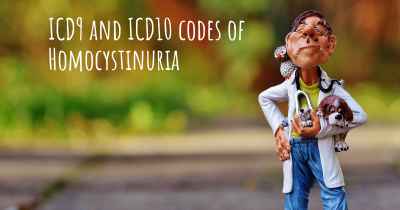What is the life expectancy of someone with Homocystinuria?
Life expectancy of people with Homocystinuria and recent progresses and researches in Homocystinuria

Homocystinuria is a rare genetic disorder that affects the body's ability to break down certain amino acids. The life expectancy of individuals with Homocystinuria can vary depending on various factors, including the severity of the condition and the effectiveness of treatment. Without proper management, complications such as cardiovascular problems, skeletal abnormalities, and intellectual disabilities can arise, potentially impacting life expectancy. However, with early diagnosis and appropriate medical interventions, including a special diet and vitamin supplements, individuals with Homocystinuria can lead relatively normal lives. It is crucial for affected individuals to receive ongoing medical care and adhere to treatment plans to minimize complications and improve their overall prognosis.
Homocystinuria is a rare genetic disorder that affects the body's ability to process certain amino acids, leading to the buildup of homocysteine in the blood and urine. This condition is caused by mutations in genes responsible for producing enzymes involved in the metabolism of homocysteine.
The life expectancy of individuals with Homocystinuria can vary depending on several factors, including the severity of the condition, the age of diagnosis, and the effectiveness of treatment. Early detection and appropriate management can significantly improve outcomes and increase life expectancy.
Untreated or poorly managed Homocystinuria can lead to various complications that may impact both the physical and cognitive health of affected individuals. Some of the potential complications associated with this condition include:
- Cardiovascular problems: Elevated levels of homocysteine can increase the risk of developing cardiovascular diseases such as blood clots, stroke, and heart attacks.
- Eye problems: Homocystinuria can cause severe nearsightedness, dislocation of the lens in the eye, and other vision problems.
- Skeletal abnormalities: Individuals with Homocystinuria may experience skeletal abnormalities such as tall stature, long limbs, scoliosis, and a tendency for the chest to sink in or protrude.
- Intellectual disability: If left untreated, Homocystinuria can lead to intellectual disability and developmental delays. However, with early intervention and appropriate treatment, the risk of cognitive impairment can be reduced.
- Thromboembolism: The excessive homocysteine levels can increase the risk of blood clots forming in veins, which can potentially lead to life-threatening complications if not managed properly.
Fortunately, with early diagnosis and proper treatment, individuals with Homocystinuria can lead relatively normal lives. Treatment typically involves a combination of dietary modifications, vitamin supplementation, and medication to lower homocysteine levels.
Dietary modifications: A low-protein diet, particularly limiting foods high in methionine (an amino acid that contributes to homocysteine production), is often recommended. This may involve avoiding certain protein-rich foods like meat, dairy products, and eggs, while incorporating alternative protein sources.
Vitamin supplementation: Individuals with Homocystinuria often require vitamin B6, vitamin B12, and folate supplements to help lower homocysteine levels and support proper metabolism.
Medication: In some cases, medication such as betaine or cysteamine may be prescribed to further reduce homocysteine levels.
Regular monitoring of homocysteine levels, as well as other relevant blood markers, is crucial to ensure treatment effectiveness and adjust interventions as needed.
It is important to note that the life expectancy of individuals with Homocystinuria has significantly improved over the years due to advancements in medical understanding and treatment options. With early diagnosis and appropriate management, individuals with Homocystinuria can lead fulfilling lives and have a near-normal life expectancy.
If you suspect that you or someone you know may have Homocystinuria, it is essential to consult with a healthcare professional for proper evaluation, diagnosis, and guidance on managing the condition.








